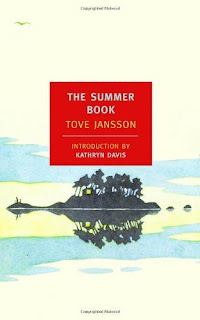
I was very glad when I started bookselling to find out that I'm not the only one who was obsessed with the Baby-Sitters Club, and that still remembering
all the members of the BSC (along with their hair color and basic personality profile) is nothing to be ashamed of. Four out of five of the just-the-right-age ladies I meet will give me a knowing smile when I mention the BSC, and I can't tell you how many horror-struck faces I've seen when I have to break the news that unfortunately,
the Baby-Sitters Club books are out of print, and no you cannot get them for your babysitting charge/niece/boyfriend's sister/whomever. People are attached to their BSC memories, and when we
fanatics run into each other, we will often indulge in a long trip down memory lane as we talk about Stacey's long blonde hair and struggle with diabetes,
the awesomeness of
Claudia Kishi's outfits ("lavender plaid overalls" come to mind), and the grand old world of Stoneybrook.
Well, hold on to your overalls, ladies and gentleman, and your white lace bodysuits and your plastic fruit earrings, because Scholastic is reissuing the series, and we just got in the first one- you know what it's called already, right? (Correct answer:
Kristy's Great Idea.) Also hot off the presses is
Ms. Martin's newly-written prequel,
The Summer Before. All I can say is that I'm ridiculously excited to finally be able to go to the shelves and hand #1 to the next person who comes in looking for the good ol' BSC.
A tangent:
Certain people sometimes question the "literary merit" of childrens' series like this. They think
Nancy Drew is shallow and
Goosebumps is worse. They would prefer that in about fourth grade all children be handed copies of
Huckleberry Finn,
To Kill a Mockingbird, and their favorite Shakespeare comedy, and not be let out of elementary school until they read, understand, and love them. It seems like a big part of our job in the Kids Department is to encourage parents and teachers to let kids discover and connect to books they choose and love, regardless of their place in The Canon. Not to the exclusion of the above-mentioned books, all of which are almost universally beloved and should be gifted and taught and treasured. But telling kids that the other books they like are dumb serves nobody.
My fourth grade teacher told us we were too old to be reading what she called "formula novels," which was a long list of her literary pet peeves and included the Baby-Sitters Club. I raised my nine-year-old hand and gave an impassioned defense of my favorite series, and she responded by saying, "All right class: raise your hand if you agree with Anna that the Baby-Sitters Club are not
formula novels" (italics indicating extra venom). I raised my hand in that stretchy, high-as-it-can-go way, and my poor best friend, loyal to the end, looked over at me, sighed, and put her hand up as well. We were not the only girls in the room who read and loved the books, but we were the only ones willing to face the disdain of a grownup by admitting it. It was the first time a grownup didn't validate that it was cool to read and love books, who said instead that there were some books you should be embarrassed about, and it was humiliating. Was I technically a little wrong, in that they can get kind of formulaic? Yeah, but I was standing up for my principles. And you know what? I learned

how to look up books in the library by myself because I wanted to find more BSC. And I babysat and nannied my way all through middle school and high school, following all the rules I learned when I was nine, and making my own money while learning a heck of a lot about responsibility and independence. And I read books she would have approved of anyway, because I liked to read, and now I work in a bookstore. So pooh on people who turn their nose up at "those" books, and thanks Kristy, Mary Ann, Stacey, Claudia, and Ann M. Martin. It was really a lot of fun.
-Anna
(Kids Books)
 1. What a shark's heart and "gill filaments" look like. The heart is tiny; the gill filaments are freaky and lobed. (See Uncover a Shark, by David George Gordon)
1. What a shark's heart and "gill filaments" look like. The heart is tiny; the gill filaments are freaky and lobed. (See Uncover a Shark, by David George Gordon)
 3. What analogous colors are- colors next to each other on the color wheel. They supposedly look good together. (See A Book About Color: A Clear and Simple Guide for Young Artists by Mark Gonyea)
3. What analogous colors are- colors next to each other on the color wheel. They supposedly look good together. (See A Book About Color: A Clear and Simple Guide for Young Artists by Mark Gonyea) 4. That you can communicate effectively with your dog with just your eyes. I'm not a dog owner, so I couldn't figure that out for myself. (See How to Talk to Your Dog, by Jean Craighead George, illustrated by Sue Truesdell)
4. That you can communicate effectively with your dog with just your eyes. I'm not a dog owner, so I couldn't figure that out for myself. (See How to Talk to Your Dog, by Jean Craighead George, illustrated by Sue Truesdell) 5. The first woman to hold a Cabinet position got it in 1933. She was Frances Perkins, FDR's Labor Secretary. (See Ladies First: 40 Daring American Women Who Were Second to None, by Elizabeth Cody Kimmel)
5. The first woman to hold a Cabinet position got it in 1933. She was Frances Perkins, FDR's Labor Secretary. (See Ladies First: 40 Daring American Women Who Were Second to None, by Elizabeth Cody Kimmel)




















